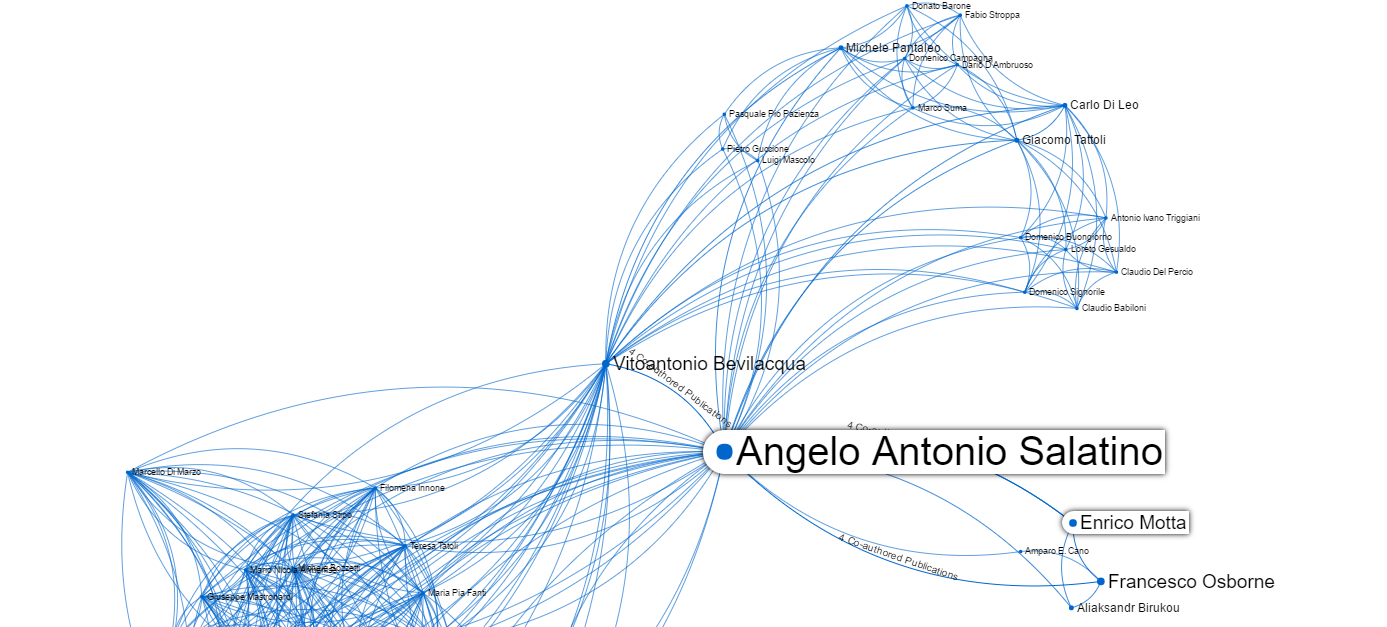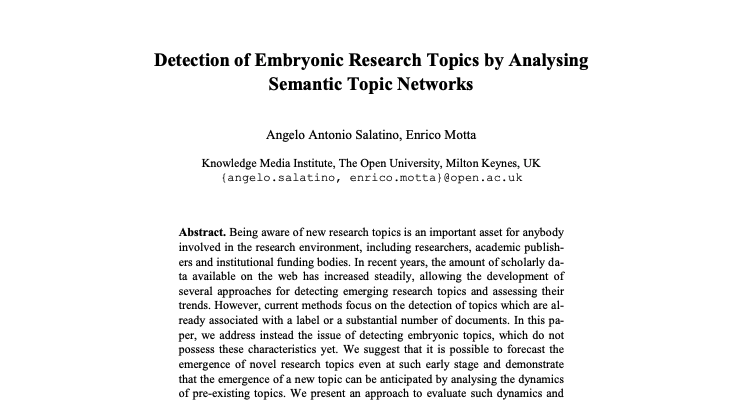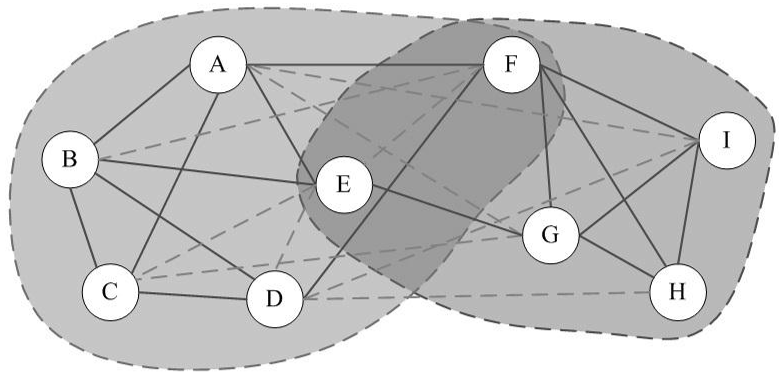Clique Percolation Method (CPM) is an algorithm for finding overlapping communities within networks, introduced by Palla et al. (2005, see references). This implementation in R, firstly detects communities of size k, then creates a clique graph. Each community will be represented by each connected component in the clique graph. Algorithm The algorithm performs the following […]
Category: Graph Analysis

XMLResearcherProfile
XMLResearcherProfile is a technology for tracking and presenting academics’ profile. In its early stage, it allows to record all the published papers (in proceedings, journals, posters and phd thesis) within a single XML file and afterwards it allows to format them as a list in a HTML page. Using specific XML tags it is possible to describe […]

Advances Towards Early Detection of Research Topics
Acknowledging new trends in the research environment is important for many stakeholders, such as researchers, institutional funding bodies, academic publishers, and companies. In particular, being able to identify them as soon as possible can bring an important strategical advantage. A trend is usually defined as the general direction in which something is evolving. It is […]

Detection of Embryonic Research Topics by Analysing Semantic Topic Networks
“Detection of Embryonic Research Topics by Analysing Semantic Topic Networks” is a workshop paper I presented at the SAVESD workshop held in conjunction with the World Wide Web Conference in 2016 in Montreal (CA). Angelo Antonio Salatino and Enrico Motta Abstract Being aware of new research topics is an important asset for anybody involved in […]
Tech Report: Early Detection and Forecasting of Research Trends
This is the First Year Probation Report submitted for the registration to the degree of Doctor of Philosophy at the Open University. Abstract Identifying and forecasting research trends is of critical importance for a variety of stakeholders, including researchers, academic publishers, institutional funding bodies, companies operating in the innovation space and others.
Analisi delle reti VANET
Per sostenere l’esame di Grafi e Combinatoria alla Facoltà di Ingegneria Informatica Magistrale presso il Politecnico di Bari era necessario un tema che inglobasse la teoria sui grafi e la teoria sui codici correttori ed un eventuale prova pratica. In collaborazione con il collega Marco Colaprico è stato sviluppato un documento con cenni teorici approfonditi […]



